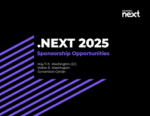
As cloud technology continues to mature, more businesses are making the jump towards cloud adoption. A recent report from the Cloud Foundry Foundation found that if it weren’t for the cloud’s maturity and reliability, adoption would have diminished.
The Cloud Foundry Foundation’s report is designed to look at what is driving businesses to the cloud. The report is based on about 600 interviews with IT decision makers worldwide. The Cloud Foundry Foundation’s mission is to make it easier to build, test, deploy and scale apps. It is currently the home of open-source projects such as the Cloud Foundry Application Runtime, Container Runtime and BOSH.
According to the report, there has been a 13 point increase in the number of respondents who are using the cloud to deploy more, and a 16 point increase year-over-year of respondents who are experimenting and adopting the latest technology for cloud solutions. The reason for the increase is that respondents are beginning to understand and feel more comfortable with cloud technologies.
“Our data suggests that cloud adoption is a virtuous cycle—the more companies adopt and then familiarize themselves with cloud technologies, the more they continue to adopt. As companies witness the immediate benefit of using the cloud, they expand their usage,” the report stated. “It is the technology itself that drives this upsurge in adoption. Business value alone is not enough.”
As businesses become more comfortable with the cloud, they are also beginning to adopt more complex technologies such as PaaS, containers and serverless, the foundation explained.
“As IT decision makers have experienced the impressive benefits of the cloud, they have broadened their adoption to more sophisticated technologies in the platform and application development layer of the stack, such as PaaS, containers and serverless,” said Abby Kearns, executive director for Cloud Foundry Foundation. “We’re seeing a virtuous cycle, as comfortability with one technology results in lightning-speed adoption of more advanced technologies. In a decade, we can expect serverless to be as commonplace as PaaS.”
Other findings include 45 percent of respondents are doing some type of cloud-native app development, 40 percent are rearchitecting or refactoring their legacy apps, and respondents are finding culture is a bigger obstacle to adoption than the technology itself.








